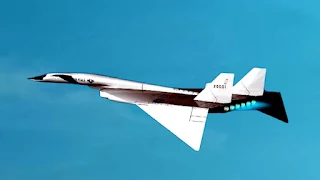Aeroplane
| Biggest Aeroplane in the world
Biggest Aircraft
Following are the 10 largest
aircraft by Weight category:
|
Sl.
No. |
Aircraft |
First
flight |
Type |
Length |
Span |
MTOW |
Capacity |
|
1 |
Airbus A380 |
27.04.2005 |
Airliner |
72.7 m |
79.8 m |
575 t |
Pax: 850 |
|
2 |
Lockheed C-5 Galaxy |
30.06.1968 |
Transport |
75.3 m |
67.9 m |
417 t |
127.5 t |
|
3 |
Antonov An-124 |
26.12.1982 |
Transport |
69.1 m |
73.3 m |
402 t |
150 t |
|
4 |
Boeing 747 |
09.02.1969 |
Airliner |
70.7 m |
59.6 m |
378 t |
Pax: 550/660 |
|
5 |
Boeing Dreamlifter |
09.092006 |
Outsize cargo |
71.7 m |
64.4 m |
364 t |
1,840 m³ |
|
6 |
Antonov An-22 |
27.02.1965 |
Transport |
57.9 m |
64.4 m |
250 t |
80 t |
|
7 |
XB-70 |
21.09.1964 |
Bomber |
56.4 m |
32.0 m |
246 t |
- |
|
8 |
Airbus BelugaXL |
19.07.2018 |
Outsize cargo |
63.1 m |
60.3 m |
227 t |
2,209 m³ |
|
9 |
Boeing B-52 |
15.04.1952 |
Bomber |
48.5 m |
56.4 m |
220 t |
- |
|
10 |
Convair B-36 |
08.08.1946 |
Bomber |
55.6 m |
70.1 m |
145 t |
- |
1. Airbus A380
The largest passenger aircraft ever built and the largest in the world is the Airbus A380. It was created by Airbus as a double-decker alternative to the Boeing 747.
The
A380 generally seats roughly 575 people, but in an all-economy configuration,
it can accommodate up to 853. Emirates operates about one-third of all A380s,
which have 484–489 seats. For first-class passengers, they also offer a shower
spa, a bar, and private rooms, so extra seats are traded for greater luxury for
those who can afford it..
Airbus
A 380 is a Airliner Category aircraft having 72.7 meter length, 79.8 meter wing
span with a maximum take off weight is 575 metric ton.
Antonov An-225 Mriya
It was the largest aircraft till 27th Febuary 2022, it was destroyed by Russian bombing on when it was parked in Antonov Airport inside hangar.
Among
the largest aircraft in 2019 was the Antonov An-225 Mriya. This essential
freight plane was built by the Antonov Design Bureau. The An-225 is the largest
aeroplane ever built, with a total lift capacity of 710 tonnes
Let's
now examine some of the Antonov An-225 Mriya's distinctive characteristics. It
has the largest wingspan of any flying object at 290 feet. If we talk about its
engines, this strong plane is propelled by a total of six turbofan engines. It
keeps the 253,820 kg transportable finish load world record.
2. Lockheed C-5 Galaxy
One of the largest aircraft in use by the US military is the Lockheed C-5 Galaxy. It is among the largest aircraft thanks to its over 135 tonnes of cargo capacity. The massive airliner would be reactivated, according to an Air Force statement from May 2017.
Two M1
Abrams tanks, sixteen Humvees, three Black Hawk helicopters, and a wide variety
of additional vehicles can all be transported by the Lockheed C-5 Galaxy.
Without refuelling, it can fly up to 7,000 kilometres. On a global scale, this
makes it the longest-range combat airlift. Additionally, the Air Force uses it
when it needs to transport a significant volume of goods at once.
Lockheed
C-5 Galaxy is a Transport Category aircraft having 75.3 meter length, 67.9
meter wing span with a maximum take off weight is 417 metric ton.
3. Antonov AN-124
One of the top ten aeroplanes ever made is another stunning design by Antonov Design Bureau. The largest combat aircraft in existence, the An-124 Ruslan, is flown by the Russian Air Force. After its introduction in 1984, the An-124 was, excepting the lone An-225, the largest and heaviest freighter in the world for over 30 years.
Even
more cargo can be transported by An-124 than by C-5 Galaxy. Despite having a
shorter range, it nevertheless boasts a cargo capacity of 165 tonnes. The
An-124 is a feat of Soviet engineering that still performs flight and cargo
tasks for Russia.
Antonov
An-124 is a Transport Category aircraft having 70.7 meter length, 59.6 meter
wing span with a maximum take off weight is 402 metric ton.
4. Boeing 747
One of the most iconic aeroplanes in the world is the Boeing 747, also known as the Queen of the Skies. It is one of the few contemporary aeroplanes with two decks and the first wide-body aircraft ever built.
The
Boeing 747-400, which was released in the 1980s and has the largest production,
can accommodate up to 660 passengers in all-economy seating and about 416
passengers in a three-class configuration.
The
most recent model, the 747-8, is larger than the 747-400 and typically
accommodates 364–467 passengers. Only 84 747-8s were produced, and none of them
were ever built in an all-economy configuration. The 747-8 was also not a very
popular aircraft.
Boeing
747 is a Airliner Category aircraft having 70.7 meter length, 59.6 meter wing
span with a maximum take off weight is 378 metric ton.
5. Boeing Dreamlifter
A wide-body cargo aircraft with significant modifications to the Boeing 747-400 airliner is called the Boeing 747-400 Large Cargo Freighter. It can carry three times as much cargo as a 747-400F freighter thanks to its volume of 65,000 cubic feet.
Boeing
Dreamlifter is a Outsize Cargo Category aircraft having 71.7 meter length, 64.4
meter wing span with a maximum take off weight is 364 metric ton.
6. Antonov An-22
The Antonov Design Bureau in the Soviet Union created the Antonov An-22 "Antei," a heavy military transport aircraft. Before launching the first An-22 on August 18, 1964, the Antonov bureau in Kiev constructed a mock-up of the enormous aircraft at its workshop. Before making its debut at the 1965 Paris Air Show, the aircraft completed four months of test flights and was given the name "Antheus," which comes from the Greek word for blossom or bloom.
Antonov
An-22 is a Transport Category aircraft having 57.9 meter length, 64.4 meter
wing span with a maximum take off weight is 250 metric ton.
7. XB-70
The United States Air Force Strategic Air Command's nuclear-armed, deep-penetration supersonic strategic bomber, designated B-70, had the North American Aviation XB-70 Valkyrie as its prototype.
Despite
a technological advance in 1957 making Mach 3 probable, the XB-70 was never put
into production. The main cause of the XB-70's downfall, like with the B-47 and
B-58, was the ongoing development of new SAMs.
The
XB-70 measured 196 feet in length, 31 feet at the tail, and had a maximum gross
weight of 521,000 pounds. The four people on board were the bombardier,
copilot, pilot, and defensive systems operator. Six turbojet engines were
arranged side by side in a sizable pod underneath the fuselage, giving the
delta wing a span of 105 feet. To increase stability at the aircraft's
supersonic speeds of up to Mach 3, the wing was swept at around 65 1/2o and the
wing tips were hydraulically folded down 25o to 65o. The Valkyrie was built to
ride its own shock wave at this speed. For stability, a big canard foreplane
with a span of 28 feet, 10 inches was mounted close to the front of the
fuselage. The XB-70s sported two sizable vertical tails in addition to
dramatically swept delta wings.
XB-70
is a Bomber Category aircraft having 56.4-meter length, 32.0 meter wing span
with a maximum takeoff weight is 246 metric ton.
8. Airbus Beluga XL
The Airbus Beluga XL is a large transport aircraft created by Airbus to replace the original Airbus Beluga for transporting big aircraft parts, such as wings. It is based on the Airbus A330-200F. On July 19, 2018, the aircraft took off for the first time, and re Long and thin wings with a wing area of 361.6m2 and a wingspan of 60.3m are mounted on the Beluga XL's fuselage. A single vertical fin and twin horizontal stabilisers are installed with two supplementary vertical tailplane end-fins in the tail portion.
The
wing structures, which are made of carbon-fibre reinforced polymer materials,
provide greater aerodynamic efficiency.
The
aircraft can carry a maximum of 227t for takeoff and 187t for landing. Without
any fuel, the aeroplane weights 178 tonnes
Two pilots and a loadmaster make up the crew of three that fly the aircraft. Two-wheel nose gear and four-wheel bogie main legs make up its undercarriage. on November 13, 2019, it received type certification.
Airbus
Beluga XL is a Outsize Cargo Category aircraft having 63.1 meter length, 60.3
meter wing span with a maximum take off weight is 227 metric ton.
9. Boeing B-52 Stratofortress
An American long-range, subsonic, jet-powered strategic bomber, the Boeing B-52 Stratofortress. Boeing is the company that created the B-52 and has since continued to support and upgrade it. Since the 1950s, the American Air Force has been running it.
The
B-52 is 160 feet 10.9 inches long and has a wingspan of 185 feet (56 metres)
(49 metres). It has eight jet engines, four of which are twin pods located
under the wings. At 55,000 feet (17,000 metres), the plane can travel at a
maximum speed of Mach 0.9 (595 mph; 960 km/hr). It can fly at Mach 0.5 (375 mph
or 600 km/h) at a height of only a few hundred feet. It had a crew of six and a
remote-controlled gun turret in the tail as its only defensive weaponry. The
crew was downsized to five people in 1991 and the gun was removed.
Boeing
B-52 Stratofortress is a Bomber Category aircraft having 48.5 meter length,
56.4 meter wing span with a maximum take off weight is 220 metric ton.
10. Convair B-36 "Peacemaker"
Convair produced the Convair B-36 "Peacemaker," a strategic bomber that was used by the US Air Force from 1949 to 1959. The B-36 is the largest piston-engined aircraft ever mass-produced. With a 230-foot wingspan, it had the largest combat aircraft ever produced.
This
extremely large, long-range nuclear bomber had to meet the requirements of the
U.S. Army Air Corps, which included having a top speed of 450 mph, a service
ceiling of 45,000 feet, the ability to carry a bomb load of 10,000 pounds, and
the ability to fly non-stop for 12,000 miles.
By
doing so, the super bomber would be able to attack European targets from
American air bases and return to their home base without refuelling.
Consolidated
Aircraft, the company that ultimately won the contract to build the B-36, and
the Boeing Aircraft Company both received bid requests.
Convair B-36 "Peacemaker" is a Bomber Category aircraft having 49.4-meter length, 70.1 meter wing span with a maximum takeoff weight is 186 metric ton.
Also Read
Full Authority Digital Engine Control (FADEC) System Description & Operation




















0 Comments